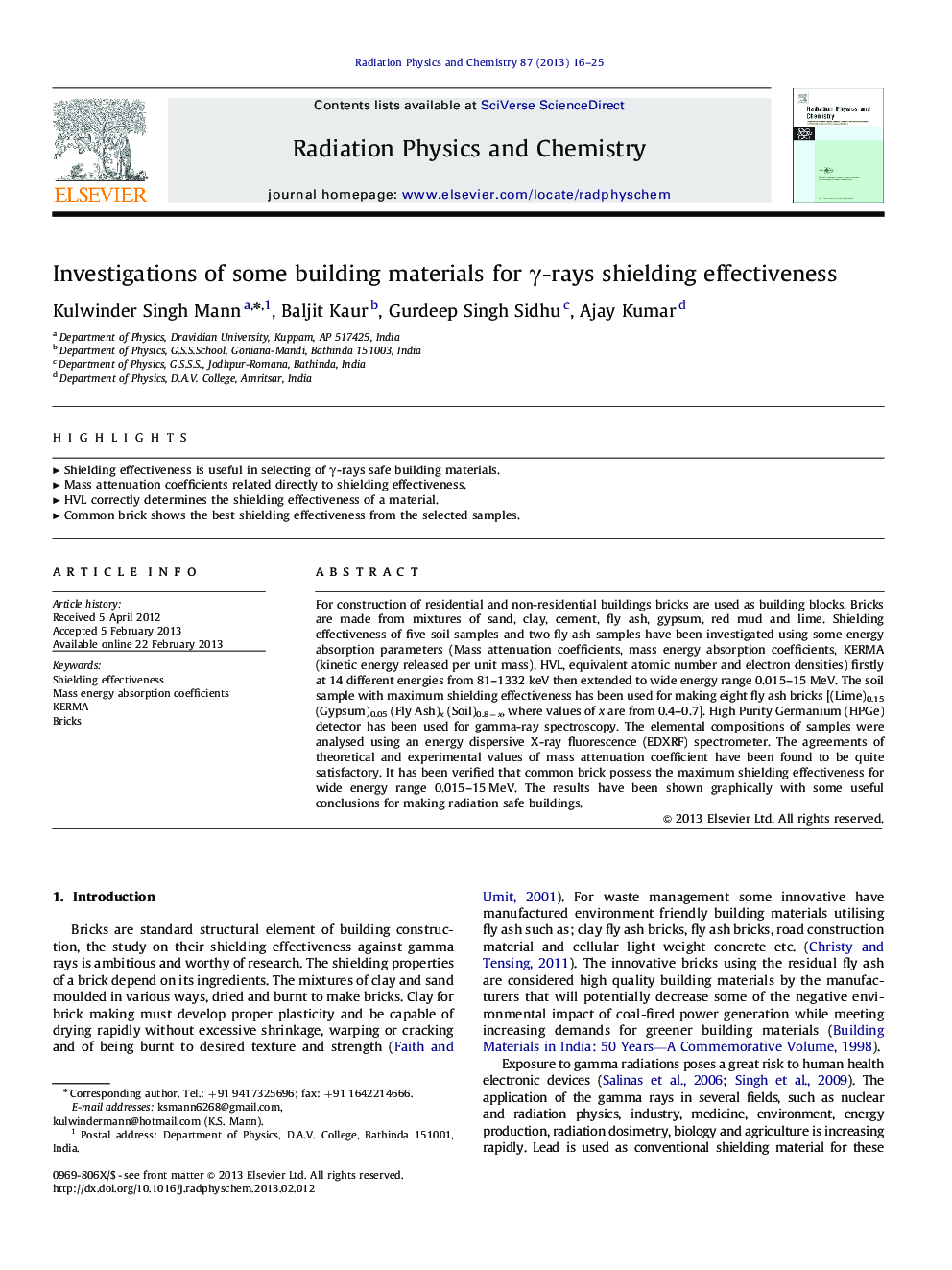| Article ID | Journal | Published Year | Pages | File Type |
|---|---|---|---|---|
| 1883700 | Radiation Physics and Chemistry | 2013 | 10 Pages |
For construction of residential and non-residential buildings bricks are used as building blocks. Bricks are made from mixtures of sand, clay, cement, fly ash, gypsum, red mud and lime. Shielding effectiveness of five soil samples and two fly ash samples have been investigated using some energy absorption parameters (Mass attenuation coefficients, mass energy absorption coefficients, KERMA (kinetic energy released per unit mass), HVL, equivalent atomic number and electron densities) firstly at 14 different energies from 81–1332 keV then extended to wide energy range 0.015–15 MeV. The soil sample with maximum shielding effectiveness has been used for making eight fly ash bricks [(Lime)0.15 (Gypsum)0.05 (Fly Ash)x (Soil)0.8−x, where values of x are from 0.4–0.7]. High Purity Germanium (HPGe) detector has been used for gamma-ray spectroscopy. The elemental compositions of samples were analysed using an energy dispersive X-ray fluorescence (EDXRF) spectrometer. The agreements of theoretical and experimental values of mass attenuation coefficient have been found to be quite satisfactory. It has been verified that common brick possess the maximum shielding effectiveness for wide energy range 0.015–15 MeV. The results have been shown graphically with some useful conclusions for making radiation safe buildings.
► Shielding effectiveness is useful in selecting of γ-rays safe building materials. ► Mass attenuation coefficients related directly to shielding effectiveness. ► HVL correctly determines the shielding effectiveness of a material. ► Common brick shows the best shielding effectiveness from the selected samples.
